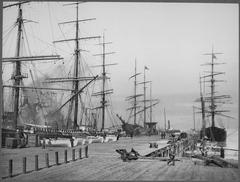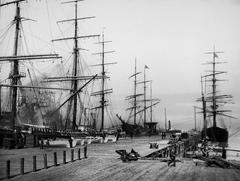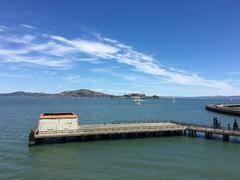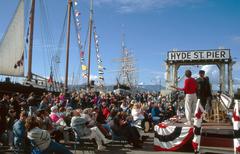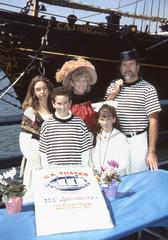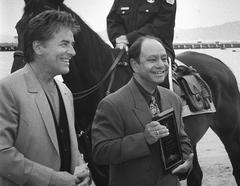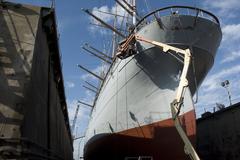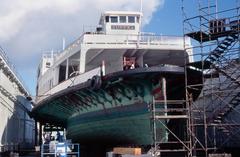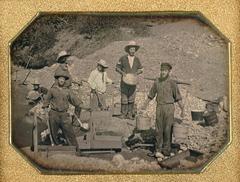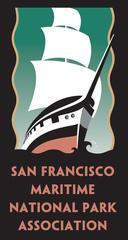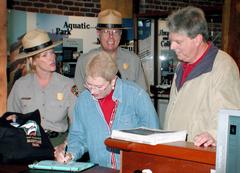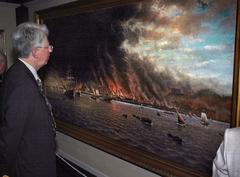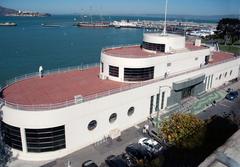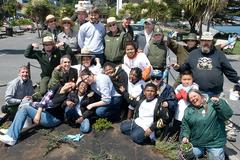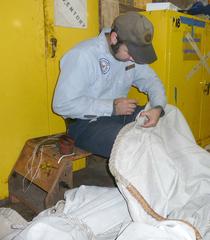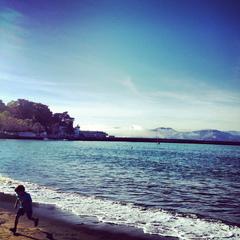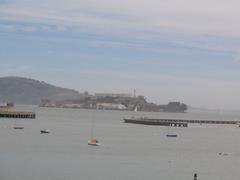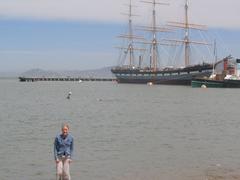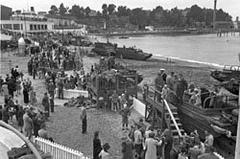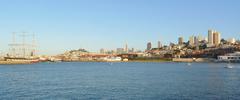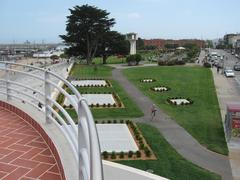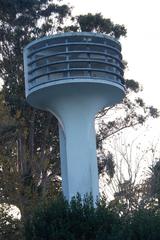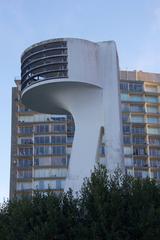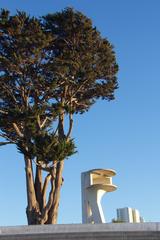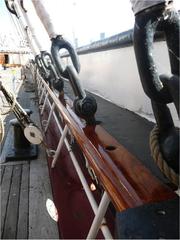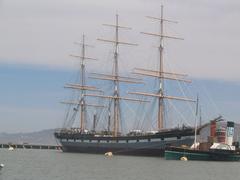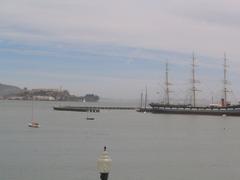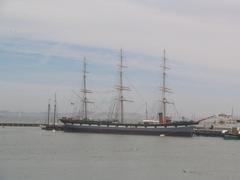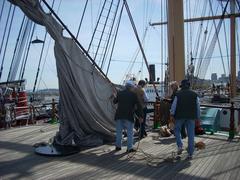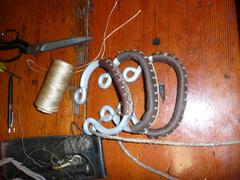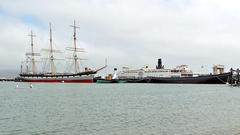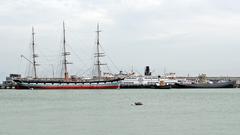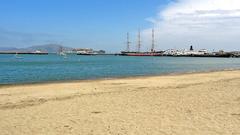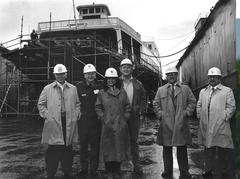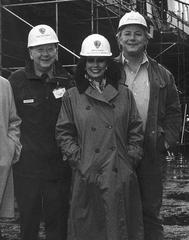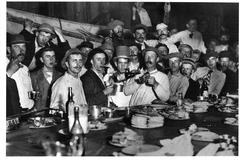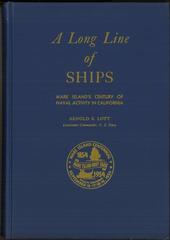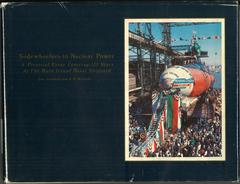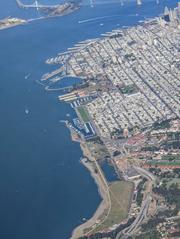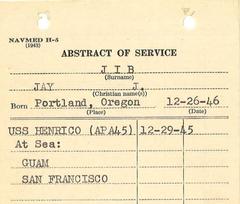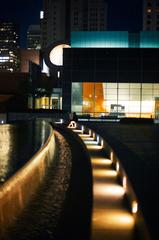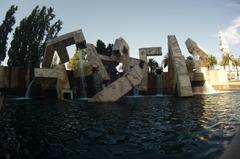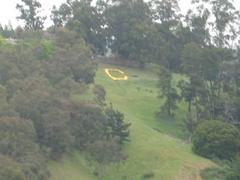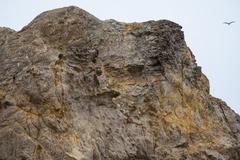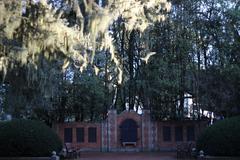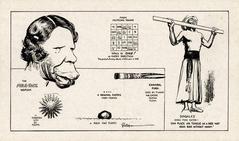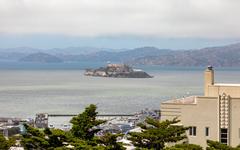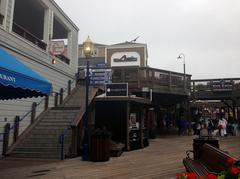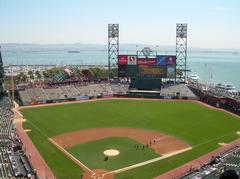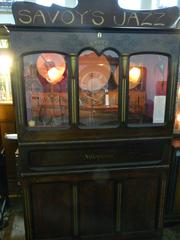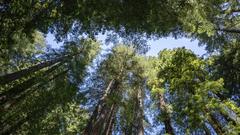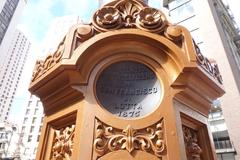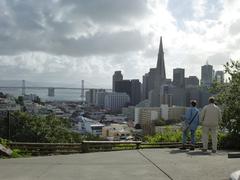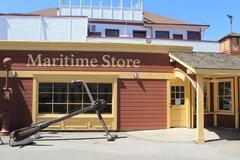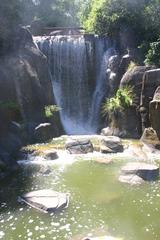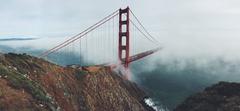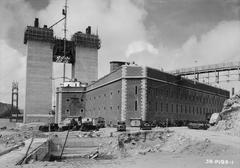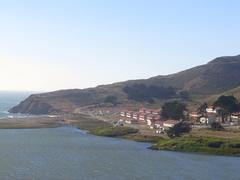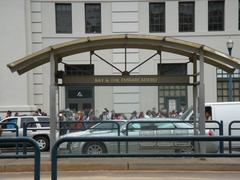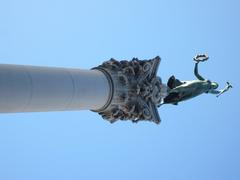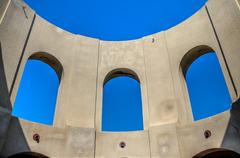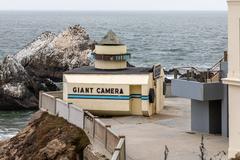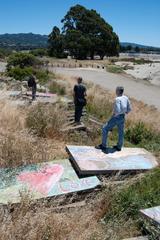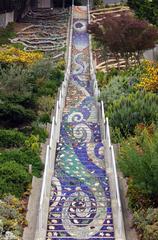
San Francisco Maritime National Historical Park
Comprehensive Guide to Aquatic Park Historic District in San Francisco
Published Date: 18/07/2024
Introduction to the Aquatic Park Historic District
Aquatic Park Historic District, located on the picturesque waterfront of San Francisco, is a captivating blend of history, culture, and recreational opportunities. This area is not just a scenic spot but a living tapestry of San Francisco’s maritime heritage, dating back to the mid-19th century. The district’s transformation from a shallow cove during the Gold Rush era into a bustling harbor underscores its historical significance (Exploring the Aquatic Park Historic District). Visitors can explore a myriad of attractions, from the iconic Hyde Street Pier, home to a collection of historic ships, to the San Francisco Maritime National Historical Park Visitor Center, which offers a deep dive into the city’s rich nautical past (Hyde Street Pier). The park’s development, significantly aided by the Works Progress Administration (WPA) during the Great Depression, showcases remarkable architectural feats, such as the Streamline Moderne Bathhouse Building and the curved municipal pier (Your Ultimate Guide to Visiting Aquatic Park Historic District in San Francisco). Today, Aquatic Park remains a vibrant destination, offering a unique blend of historical exploration, cultural experiences, and breathtaking views of the Golden Gate Bridge, Alcatraz Island, and the San Francisco skyline.
Table of Contents
- [A Deep Dive into Aquatic Park’s Storied Past](#a-deep-dive-into-aquatic-parks-storied-pasta-deep-dive-into-aquatic-parks-storied-past)
- [Early Days - A Harbor Takes Shape](#early-days---a-harbor-takes-shapeearly-days---a-harbor-takes-shape)
- [The Ferry Building and Transportation Hub](#the-ferry-building-and-transportation-hubthe-ferry-building-and-transportation-hub)
- [The Panama-Pacific International Exposition - A Moment of Grandeur](#the-panama-pacific-international-exposition---a-moment-of-grandeurthe-panama-pacific-international-exposition---a-moment-of-grandeur)
- [From Industrial Use to Recreational Haven](#from-industrial-use-to-recreational-havenfrom-industrial-use-to-recreational-haven)
- [The Birth of Aquatic Park](#the-birth-of-aquatic-parkthe-birth-of-aquatic-park)
- [The WPA’s Enduring Legacy](#the-wpas-enduring-legacythe-wpas-enduring-legacy)
- [A National Historic Landmark](#a-national-historic-landmarka-national-historic-landmark)
- [Aquatic Park Today - A Blend of Past and Present](#aquatic-park-today---a-blend-of-past-and-presentaquatic-park-today---a-blend-of-past-and-present)
- [Visitor Information](#visitor-informationvisitor-information)
- [Ticket Prices](#ticket-pricesticket-prices)
- [Opening Hours](#opening-hoursopening-hours)
- [Accessibility](#accessibilityaccessibility)
- [Travel Tips and Nearby Attractions](#travel-tips-and-nearby-attractionstravel-tips-and-nearby-attractions)
- [Best Times to Visit](#best-times-to-visitbest-times-to-visit)
- [Nearby Attractions](#nearby-attractionsnearby-attractions)
- [Public Transportation](#public-transportationpublic-transportation)
- [FAQ](#faqfaq)
- [Conclusion](#conclusionconclusion)
- [References](#referencesreferences)
A Deep Dive into Aquatic Park’s Storied Past
Early Days - A Harbor Takes Shape
The area now known as Aquatic Park was once a shallow cove. Its transformation began in the mid-19th century during the Gold Rush, a period of rapid growth for San Francisco. As ships flooded the harbor, the need for more waterfront space became critical. Land was gradually filled in, expanding the shoreline and creating new real estate.
The Ferry Building and Transportation Hub
A pivotal moment in the area’s development was the construction of the Ferry Building in 1898 (Ferry Building Marketplace). This architectural masterpiece, with its iconic clock tower, quickly became the gateway to the city, connecting San Francisco to points north via ferry services. The bustling activity around the Ferry Building further solidified the area’s importance as a transportation hub.
The Panama-Pacific International Exposition - A Moment of Grandeur
In 1915, San Francisco hosted the Panama-Pacific International Exposition (The Panama-Pacific International Exposition), a world’s fair celebrating the completion of the Panama Canal. The area around Aquatic Park was significantly transformed for the exposition, with grand palaces and pavilions erected to showcase the latest in art, science, and technology.
From Industrial Use to Recreational Haven
Following the exposition, the area transitioned from a grand spectacle to a more industrial landscape. Piers were built, warehouses sprung up, and the waterfront became a hub for shipping and industry. However, the rise of the automobile and the decline of ferry transportation in the mid-20th century led to a decline in industrial activity.
The Birth of Aquatic Park
The idea for a public park on the waterfront began to take shape in the 1930s. The Works Progress Administration (WPA), a New Deal program aimed at creating jobs during the Great Depression, played a crucial role in making this vision a reality.
The WPA’s Enduring Legacy
The WPA’s impact on Aquatic Park is undeniable. The organization employed thousands of workers to construct the park’s iconic features, including:
- Aquatic Park Municipal Pier: This curved pier, completed in 1939, was designed to protect a newly created swimming beach.
- The Bathhouse Building: Built in the Streamline Moderne style, this building housed changing rooms, showers, and a restaurant. Today, it’s home to the Aquatic Park Cafe and the Maritime Museum.
- Hyde Street Pier: Originally a working pier, it was transformed into a historic ship museum in the 1950s, showcasing a collection of historic vessels.
A National Historic Landmark
In 1987, Aquatic Park Historic District was designated a National Historic Landmark (Aquatic Park Historic District), recognizing its significance in American history and architecture. The district encompasses not only the park itself but also the surrounding buildings, including the historic ships on Hyde Street Pier.
Aquatic Park Today - A Blend of Past and Present
Today, Aquatic Park Historic District stands as a testament to San Francisco’s dynamic past. Visitors can stroll along the waterfront, admire the historic architecture, explore maritime history at the Hyde Street Pier, or simply relax and enjoy the stunning views of the Golden Gate Bridge, Alcatraz Island, and the San Francisco skyline. The park continues to be a popular destination for locals and tourists alike, offering a unique blend of history, recreation, and cultural experiences.
Visitor Information
Ticket Prices
Visiting Aquatic Park Historic District is free of charge. However, certain attractions such as the Maritime Museum may require a small entrance fee.
Opening Hours
The park is open daily from 6:00 AM to 10:00 PM. The Maritime Museum operates from 10:00 AM to 4:00 PM, with extended hours during the summer.
Accessibility
Aquatic Park is fully accessible, with paved pathways and ramps available for wheelchair users. Accessible restrooms are also located throughout the park.
Travel Tips and Nearby Attractions
Best Times to Visit
Spring and fall offer the most pleasant weather and fewer crowds. Early mornings and late afternoons provide the best light for photography.
Nearby Attractions
- Ghirardelli Square: For shopping and dining, don’t miss Ghirardelli Square (Ghirardelli Square).
- Fisherman’s Wharf: Famous for its seafood and maritime history (Fisherman’s Wharf).
Public Transportation
The park is easily accessible via San Francisco’s Muni system. The F Market streetcar line stops nearby, and several bus routes serve the area.
FAQ
- What are the visiting hours for Aquatic Park? Aquatic Park is open daily from 6:00 AM to 10:00 PM.
- How much do tickets to Aquatic Park cost? Entry to Aquatic Park is free, but some attractions may have separate fees.
- What are the best times to visit Aquatic Park? Spring and fall are ideal for a visit, with pleasant weather and fewer crowds.
Conclusion
In conclusion, the Aquatic Park Historic District stands as a testament to San Francisco’s rich maritime heritage and its continuous evolution. From its initial days as a crucial harbor during the Gold Rush to its transformation into a recreational haven, the district encapsulates the city’s dynamic history. The area’s designation as a National Historic Landmark in 1987 further emphasizes its importance in American history and architecture (Aquatic Park Historic District). Today, it offers an engaging experience for visitors, with attractions like the Hyde Street Pier, the Maritime Museum, and the bustling Ghirardelli Square. Whether you’re a history enthusiast, a nature lover, or someone looking for a serene spot to relax, Aquatic Park has something to offer. Plan your visit, explore the historic ships, enjoy the scenic promenade, and immerse yourself in the vibrant history and beauty of San Francisco’s waterfront. For the latest updates, download the Audiala mobile app, check out related posts, and follow us on social media.
References
- Exploring the Aquatic Park Historic District - History, Visiting Hours, and Tickets, 2024, Unknown Author source
- Your Ultimate Guide to Visiting Aquatic Park Historic District in San Francisco, 2024, Unknown Author source
- Visiting Aquatic Park Historic District - History, Tickets, and Tips for San Francisco’s Maritime Treasure, 2024, Unknown Author source
